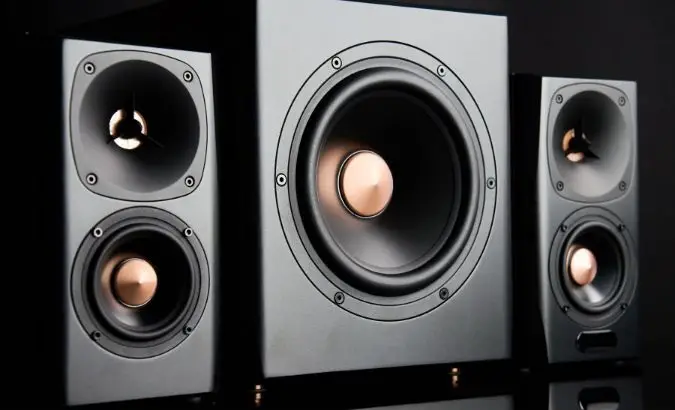
Bookshelf speakers can technically function just fine on their own – a subwoofer is never explicitly required in any sound system. However, the bass from a pair of standalone bookshelf speakers will typically be lacking due to the practical design limitations of a smaller cabinet. Furthermore, a subwoofer can also help bookshelf speakers perform and sound better overall by relieving them of the duty of reproducing the lower frequencies, thus allowing them to really focus on the mids and highs, which they’re generally optimized to do.
Most bookshelf speakers utilize a two way design with a single crossover between a small tweeter, which produces the highs, and a standard sized woofer (usually 5.25 or 6 inches). In general, the bigger a driver gets, the better job it does at reproducing lower frequency sound waves, i.e. bass, but that then detracts from its ability to produce the mid range waves. It’s an unavoidable trade off, a “jack of all trades, master of none” situation.
One solution to this is to utilize a three way design that sets a second crossover to a dedicated built in subwoofer, which is often how tower speakers are designed. While there are plenty of these kinds of speakers, and many of them sound great, they’re generally higher end and significantly more expensive. Speakers that are made big enough to accommodate a larger driver also become heavier and harder to position.
With a separate subwoofer, the driver and cabinet can be nice and big (most sub drivers are 10-12 inches), while the bookshelf speakers can remain compact, economical thus, and really focused on the mids and highs which is what a two way design is really meant to do. A separate subwoofer also gives you more positional options to optimize sound – you can put bookshelf speakers at head level and tuck the subwoofer into the corner of the room to take advantage of the wall’s acoustics.
For those looking to stick to a low to mid range budget – which will be most people – you’ll almost always get the best bass and overall performance for your dollar with a pair of bookshelf speakers and a subwoofer over a higher end pair of standalone speakers. There are now plenty of really solid and inexpensive bookshelf speakers and subwoofers.
Some people might be intimidated at the idea of connecting a subwoofer, but that’s actually really easy because most home theater subwoofers are powered. All you need is an wall-outlet and a sub-out or RCA jack on your receiver, which pretty much any receiver will have. Many subs are wireless too, so you might not even need to physically hook it up to your receiver.
